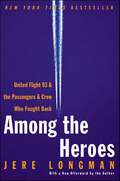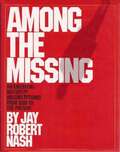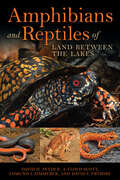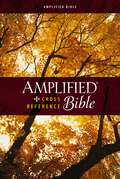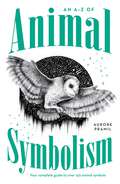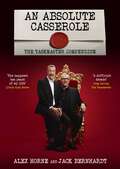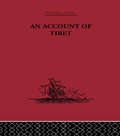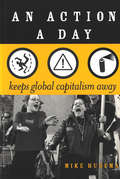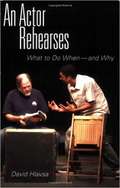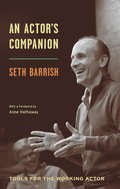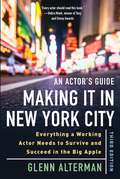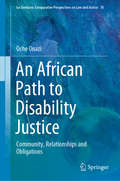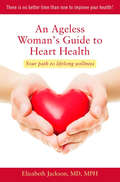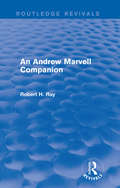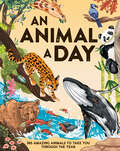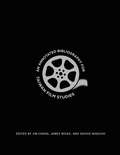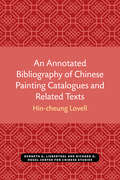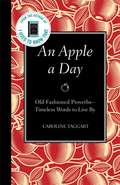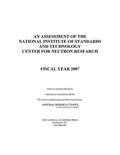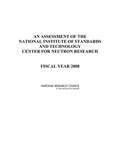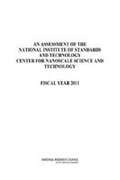- Table View
- List View
Among the Heroes: United Flight 93 & the Passengers & Crew Who Fought Back
by Jere Longman“A powerful reconstruction of the flight’s final moments. . . . Made me think of John Hersey’s Hiroshima.” — New York Times Book ReviewThedefinitive story of the courageous men and women aboard Flight 93 on September 11, 2001, and of the day that forever changed the way Americans view the world and themselves.Of the four horrific hijackings on September 11, Flight 93 resonates as one of epic resistance. At a time when the United States appeared defenseless against an unfamiliar foe, the gallant passengers and crew of Flight 93 provided for many Americans a measure of victory in the midst of unthinkable defeat. Together, they seemingly accomplished what all the security guards and soldiers, military pilots and government officials, could not—they thwarted the terrorists, sacrificing their own lives so that others might live.The culmination of hundreds of interviews with family members and months of investigation,this powerful and deeply moving book is a lasting testament to American heroes.
Among the Missing: An Anecdotal History of Missing Persons from 1800 to the Present
by Jay Robert NashThe endless mystery of Amelia Earhart's last flight. The mysterious disappearance of Judge Joseph Force Crater. The vanishing acts of Agatha Christie, Sherwood Anderson and Aimee Semple McPherson. The lost adventurers - Colonel Percy Fawcett, Richard Halliburton, and George Leigh-Mallory. These famous faces and hundreds more make up this fascinating and fact-filled book. Along with the cases that made national and worldwide headlines, there are the exotic stories of infamous or until now obscure missing persons which read like captivating mystery, adventure, and sometimes science fiction tales. There is the case of New York heiress Dorothy Arnold, who vanished forever while crossing Fifth Avenue during a day of shopping. And David Lang, who according to 5 eyewitnesses, evaporated into thin air on a Tennessee country road in 1880. Then there was Arthur Orton, who insisted until his last breath that he was Roger Charles Tichborne, the scion of one of England's oldest families, whose vast holdings brought him a million dollars a year until he mysteriously disappeared with the ship Bella in 1854. The stories of those who returned from the world of the missing are often the most bizarre. The book contains all the elements of high human drama: love, vengeance, avarice, adventure, mystery, violence, sex, and murder.
Amphibians and Reptiles of Land Between the Lakes
by David H. Snyder A. Floyd Scott Edmund J. Zimmerer David F. FrymireKnown for its natural beauty, Land Between the Lakes National Recreation Area is the largest inland peninsula in the United States. Consisting of 170,000 acres of forested and protected public land between Kentucky Lake (Tennessee River) and Lake Barkley
Amplified Cross-Reference Bible
by ZondervanThe Amplified Cross-Reference Bible offers the full text of the popular Amplified® translation along with an extensive center-column cross-reference system to help you get the most out of your Bible-reading experience.The Amplified Bible is designed for readers who want to understand all the rich nuances of the original Bible languages. No working knowledge of Greek or Hebrew is required—just a desire to know more about what God says in his Word. With its unique system of brackets, parentheses, and italics, the Amplified Bible defines and expands key words and phrases right in the text. Verse by verse, the deeper meaning behind the message of Scripture unfolds as you read.
Amy Herzog's Ultimate Sweater Book: The Essential Guide for Adventurous Knitters
by Amy HerzogA comprehensive guide to knitting sweaters and designing and modifying sweater patterns, by the author of You Can Knit and Knit to Flatter.Yarn and fiber enthusiasts everywhere will celebrate the latest addition to Amy Herzog’s beloved knitting series (which includes You Can Knit That, Knit to Flatter, and Knit Wear Love). This essential guide details every aspect of sweater knitting, starting with instructions for four basic sweater types: yoke, raglan, drop shoulder, and set-in sleeve. Patterns are offered in multiple sizes and yarn gauges for broad appeal. Following the basics for each of the four sweater types are a diverse range of customizing options, including how to add a hood, cowl neck, turtleneck, pockets, and zip or cardigan front, just to name a few. Amy’s clear instruction and expert tips expand the many knitting possibilities, creating the essential knitting resource for knitters everywhere.
An A-Z of Animal Symbolism: Your complete guide to over 150 animal symbols
by Aurore PramilLearn to interpret the messages the animal world has for you!A bird knocks insistently on your window, your cat brings you a lizard, you find yourself face to face with a spider or you dream of an elephant ... what if each animal had a message for you? Animals have always been a source of fascination for humans - we love to watch them, learn about them and keep them as pets. But what if animals could actually communicate with us? In this complete guide, you'll find everything you need to know about the symbolism and signs of more than 150 animals, whether they appear to you in a dream or 'happen' to cross your path. You'll learn their individual characteristics as well as the elements and seasons they're associated with. You'll also discover what these encounters mean for different aspects of your life including love, career, family and health. Messages from the animal world are always filled with compassion but animals aren't there to flatter your ego. Rather, they aim to help you advance in consciousness in your life's journey. Sometimes you'll receive an encouraging sign that confirms you're on the right path or guidance to help you move forward. Other times, an animal will deliver a deeper lesson for you to explore, because that's how we learn. More than anything, their messages can open avenues of questioning and help to make your way forward clearer. The animals wish you well; they want you to hear their messages. Let them become your guides!
An Absolute Casserole: The Taskmaster Compendium
by Alex HorneHow many eggs have been broken in the making of this programme? What is the worst thing Alex has eaten? Are you more likely to win Taskmaster if you wear a hat? Why is the Taskmaster always right?This hilarious compendium celebrates a decade of Taskmaster's inspired chaos. Relive the most outrageous tasks, iconic meltdowns, and ingenious victories from your favourite contestants.Inside you'll find: - Unforgettable challenges: From the brilliantly bizarre to the wonderfully pointless, revisit the tasks that left us howling with laughter. - Comedy gold moments: Contestant blunders, inspired madness and Greg Davies' withering put-downs - Behind the scenes: Get the inside scoop on the show's creation, meet the show's creators and find out which tasks nearly set the Taskmaster house on fire. - Statistical analysis: 17 series, 85 contestants and thousands of smashed eggs - what's the best star sign to be if you want to win? This is the ultimate gift for any Taskmaster fanatic. So grab a cup of 'warm milk' (or something stronger) and relive ten years of comedic chaos!
An Account of Tibet: The Travels of Ippolito Desideri of Pistoia, S.J. 1712- 1727
by Ippolito DesideriFirst published in 1932.As well as an extensive introduction, this edition contains notes to all four books, a bibliographical index, a general index and an index of Tibetan words. The introduction is particularly valuable in that it sets the importance of Desideri's mission in the general context of the Jesuit Missions to Tibet.In Desideri's account we receive the first accurate general description of Tibet: from the natural world to the sociological and anthropological aspects of the people and a complete exposition of Lamaism. His is the only complete reconstruction that we possess of the Tibetan religion, founded entirely on canonical texts. And all of this more than a century before Europeans had any knowledge of the Tibetan language.
An Action A Day: Keeps Global Capitalism Away
by Mike Hudema“An Action A Day Keeps Global Capitalism Away,” according to Mike Hudema, describing his action guide for the 21st century. This lively, challenging, and decidedly fun book is designed for activists and concerned citizens who want to change the world. Hudema introduces readers to a variety of issues, including social action, organizing, theatrical action, civil disobedience, and using the media.The book contains fifty-two tried and tested actions, one for every week. Each action includes a rationale–what you need to pull it off, and examples of where it could be used. From Radical Cheerleading, to Fishing in the Sewers, and Gas Mask Car Shopping, there’s something for everybody.
An Actor Rehearses: What to Do When and Why
by David HlavsaWith a commonsense approach, An Actor Rehearses takes performers through the rehearsal process and explains exactly what to do when. The actor’s process is explained simply, sequentially, and in detail, starting from the period before rehearsals begin and continuing through first read-through, blocking rehearsals, technical rehearsals, and performances. Packed with exercises that are useful in the classroom and in the rehearsal studio, An Actor Rehearses is an indispensable guide to the rehearsal process that makes building a character easier and more rewarding for both actor and audience. And because author David Hlavsa’s emphasis is on relating acting to life, performers learn to make a remarkable connection between becoming a better actor and becoming a better person: more compassionate, more vital, more alive. Clear, practical, usable advice for actors at every level Unique focus: learning to become a better actor means learning to become a better person Huge potential audienceAllworth Press, an imprint of Skyhorse Publishing, publishes a broad range of books on the visual and performing arts, with emphasis on the business of art. Our titles cover subjects such as graphic design, theater, branding, fine art, photography, interior design, writing, acting, film, how to start careers, business and legal forms, business practices, and more. While we don't aspire to publish a New York Times bestseller or a national bestseller, we are deeply committed to quality books that help creative professionals succeed and thrive. We often publish in areas overlooked by other publishers and welcome the author whose expertise can help our audience of readers.
An Actor's Companion
by Seth Barrish Anne Hathaway"I was totally unprepared for the transformation that Seth's technique created in me. . . . I realized that what I thought I knew about acting up to that point was largely misguided . . . but I now had a great, talented, dedicated teacher who generously wanted to share his tools with everyone. There is muscularity, not to mention wisdom and truth to Seth's techniques. He is a wonderful teacher, and I know that having him as my first guide is one of the luckiest things to have happened to me in my career and life. And when I can't get back to class with him, I am so grateful I have this book to turn to."--Anne Hathaway"This book is truly unlike anything else I know--these pieces are haikus on specific elements of performance and character building."--Philip Himberg, executive director, Sundance Theatre InstituteA collection of practical acting tips, tools, and exercises, An Actor's Companion is ideal for both the seasoned professionals and actors-in-training. The tips--all simple, direct, and useful--are easy to understand and even easier to apply, in both rehearsal and in performance.Seth Barrish is an actor, teacher, and the co-artistic director of The Barrow Group in New York City. In his thirty-year career, he has directed the award-winning shows My Girlfriend's Boyfriend (Lucille Lortel Award for Best Solo Show, Drama Desk and Outer Critics Circle nominations for Best Solo Show), Sleepwalk With Me (Nightlife Award for Outstanding Comedian in a Major Performance), The Tricky Part (Obie Award, Drama Desk nominations for Best Play and Best Solo Show), Pentecost (Drama Desk nomination for Best Play), Old Wicked Songs (Los Angeles Drama Critics Circle Award and Garland Award for Best Direction), and Good (Straw Hat Award for Best Direction), among dozens of others.
An Actor's Guide—Making It in New York City, Third Edition: Everything a Working Actor Needs to Survive and Succeed in the Big Apple
by Glenn AltermanA Step-by-Step Guide for the Actor Pursuing a Career in New York A great deal has changed in the industry in the last decade. In this new, third edition of An Actor&’s Guide—Making It in New York City, Glenn Alterman provides everything actors need to know. You&’ll discover the ten things that it takes to make it as a successful actor in the city, how to support yourself, where and how to start your life as a New York actor, understanding and marketing &“your brand,&” the best acting schools and conservatories, effective ways to contact agents and casting directors, and more. The author, a successful working actor, also shares many insider tips on topics such as: how to network effectivelyheadshots, photographers, and how to have a successful photo sessioncreating your actor websitesthe best Internet resources and casting siteshow to give winning auditions and interviewsfinding and developing great monologuesoff and off-off Broadway opportunitiesTV and film opportunitiesvoice-overscommercial print modelingcommercialssurvival jobsappropriate behavior in the businessscams and rip-offs to avoidinformation for actors with disabilitiesinformation on diversity and LGBTQ concernsa listing of agents, casting directors and theaters Among the book&’s many interviews are legendary show business figures, such as actors Henry Winkler, Alison Fraser, Dylan Baker, Lisa Emery, and Charles Busch, as well as casting directors Juliet Taylor, Ellen Lewis, Jay Binder, Donna DeSeta, and Liz Lewis, among many others. With Alterman&’s essential guide, you&’ll be prepared to launch and maintain your dream career in the city that never sleeps.
An African Path to Disability Justice: Community, Relationships and Obligations (Ius Gentium: Comparative Perspectives on Law and Justice #78)
by Oche OnaziHow should disability justice be conceptualised, not by orthodox human rights or capabilities approaches, but by a legal philosophy that mirrors an African relational community ideal? This book develops the first comprehensive answer to this question through the contemporary literature on African philosophy, which is relied upon to construct a legal philosophy of disability justice comprising of ethical ideals of community, human relationships and obligations. From these ideals, an African legal philosophy of disability justice is offered as a criterion for critically evaluating existing laws, legal and political institutions, as well as providing an ethical basis for creating new ones to ensure that they are inclusive to people with disabilities. In taking an alternative perspective on the subject, the book outlines and emphasises the need for a new public culture of obligations owed to people with disabilities, highlighting both the prospects and difficulties of achieving the ideal of disability justice that continues to elude the lived experiences of millions of Africans today. Oche Onazi's An African Path to Disability Justice is the first book-length exploration of disability in the light of African ethics, as contrasted with the human rights and capabilities frameworks. Of particular interest are Onazi's thoughtful reflections on how various conceptions of community salient in African moral philosophy––including group-based, reciprocal and relational––bear on what we owe to the disabled. --Thaddeus Metz, Distinguished Professor, University of Johannesburg
An Ageless Woman's Guide to Heart Health
by Elizabeth JacksonHeart disease has long been thought of as a men's issue, when it is actually the leading cause of death in both men and women. In fact, since 1984, more American women than men have died of heart disease. Are you surprised?.Often at the helm of their family's overall health, diet, and nutrition, a woman and her lifestyle decisions can affect not only her own wellbeing; they can determine the habits of her partner and children as well. By becoming better educated, a woman can have a profound, permanent impact on the health of the people around her..An Ageless Woman's Guide to Heart Health is every woman's guidebook to enjoying a heart-healthy life. Renowned cardiologist Dr. Lisa Jackson shares tips and resources to help you make positive steps toward improving your health. Whether you're younger or older, fit or ailing, it's never too late to make changes in your life that can lead you-and those you love-to a healthier heart.
An Ageless Woman's Guide to Heart Health
by Elizabeth JacksonHeart disease has long been thought of as a men's issue, when it is actually the leading cause of death in both men and women. In fact, since 1984, more American women than men have died of heart disease. Are you surprised?.Often at the helm of their family's overall health, diet, and nutrition, a woman and her lifestyle decisions can affect not only her own wellbeing; they can determine the habits of her partner and children as well. By becoming better educated, a woman can have a profound, permanent impact on the health of the people around her..An Ageless Woman's Guide to Heart Health is every woman's guidebook to enjoying a heart-healthy life. Renowned cardiologist Dr. Lisa Jackson shares tips and resources to help you make positive steps toward improving your health. Whether you're younger or older, fit or ailing, it's never too late to make changes in your life that can lead you-and those you love-to a healthier heart.
An Andrew Marvell Companion (Routledge Revivals #Vol. 1243)
by Robert H. RayFirst published in 1998, this title provides for the reader of the renowned metaphysical poet and politician a valuable reference and resource volume. It is a compendium of useful information for any reader of Andrew Marvell, including crucial biographical material, historical contextualisation, and details about his life’s work. The intention throughout is to enhance understanding and appreciation, without being exhaustive. The major portion of the volume, in both importance and size, is ‘A Marvell Dictionary’. Its entries are arranged alphabetically: they identify, describe and explain the most influential persons in Marvell’s life and works, as well as places, characters, allusions, ideas, concepts, individual words, phrases and literary terms that are relevant to a rounded appreciation of his poetry and prose. An Andrew Marvell Companion will prove invaluable for all students of English poetry and seventeenth-century political history.
An Animal a Day: 365 Amazing Animals to Take You Through the Year
by Miranda SmithDiscover a fascinating new animal for every day of the year! The perfect gift for animal lovers aged 6 and up.New day, new animal!In this gorgeous calendarized collection, you'll travel through the incredible ecosystems and habitats of our wild planet and meet 365 of the amazing animals that call it home.Dive into the oceans to find whales and giant squid, soar though skies with eagles and snowy owls, race across the African savanna with lions and wildebeest—and so much more. Each day&’s entry is filled with fascinating facts and breathtaking illustrations that bring animals to life. You'll encounter familiar favorites, plus find out new sides to critters you thought you already knew and learn about completely new animals.Packed with engaging info, this book also features information about conservation and how we can protect endangered animals and their environments.It's the ultimate gift for any animal lover, from age 6 to 106!
An Annotated Bibliography for Taiwan Film Studies
by James Jim Cheng Wicks Noguchi SachieCompiled by two skilled librarians and a Taiwanese film and culture specialist, this volume is the first multilingual and most comprehensive bibliography of Taiwanese film scholarship, designed to satisfy the broad interests of the modern researcher. The second book in a remarkable three-volume research project, An Annotated Bibliography for Taiwan Film Studies catalogues the published and unpublished monographs, theses, manuscripts, and conference proceedings of Taiwanese film scholars from the 1950s to 2013. Paired with An Annotated Bibliography for Chinese Film Studies (2004), which accounts for texts dating back to the 1920s, this series brings together like no other reference the disparate voices of Chinese film scholarship, charting its unique intellectual arc. <P><P>Organized intuitively, the volume begins with reference materials (bibliographies, cinematographies, directories, indexes, dictionaries, and handbooks) and then moves through film history (the colonial period, Taiwan dialect film, new Taiwan cinema, the 2/28 incident); film genres (animated, anticommunist, documentary, ethnographic, martial arts, teen); film reviews; film theory and technique; interdisciplinary studies (Taiwan and mainland China, Taiwan and Japan, film and aboriginal peoples, film and literature, film and nationality); biographical materials; film stories, screenplays, and scripts; film technology; and miscellaneous aspects of Taiwanese film scholarship (artifacts, acts of censorship, copyright law, distribution channels, film festivals, and industry practice). Works written in multiple languages include transliteration/romanized and original script entries, which follow universal AACR-2 and American cataloguing standards, and professional notations by the editors to aid in the use of sources.
An Annotated Bibliography of Chinese Painting Catalogues and Related Texts (Michigan Monographs In Chinese Studies #16)
by Hin-Cheung LovellThe student of Chinese painting must from time to time consult John C. Ferguson’s Li-tai chu-lu hua mu, an index to Chinese paintings recorded in Chinese catalogues. The catalogues in which the paintings are compiled are of equal interest: their compilers, the date of their compilation, their scope, their derivation, their merits and shortcomings, and so on. An Annotated Bibliography of Chinese Painting Catalogues and Related Texts provides a way for English-language students with limited knowledge of Chinese to find basic information on the catalogues in an easily available form.
An Apple a Day
by Caroline TaggartFrom Old Testament proverbs to modern phrases like "the best things in life are free," An Apple a Day takes a fun look at expressions that "have stood the test of time." Read through from start to finish or search through the list of hundreds of the most common proverbs, arranged from A to Z for easy reference. You'll learn about each proverb's surprising origins, why some are valid and others are not, the derivation and meanings behind them, and their relevance in today's society. Includes entries like: Two heads are better than one: Like the less-familiar "Four eyes see better than two," this proverb extols the benefits of having someone else help you make up your mind-and it's a view that goes back to at least the fourteenth century. But while it is always useful to have a second opinion (A sounding board? Someone else to blame?) it might also be worth bearing in mind the disadvantages of design or decision-making by committee: something that really pleases no one. So whereas two heads may well be better than one, three could be a crowd. Laughter is the best medicine: This idea is an ancient one and is found in, appropriately, the book of Proverbs: "A merry heart doeth good like a medicine: but a broken spirit drieth the bones." It has prompted a surprising amount of research, with the result that some scientists claim that laughter has the same benefits as a mild workout-it stretches muscles, sends more oxygen to the tissues, and generally makes you feel healthier. One study even claims that laughing heartily for 10-15 minutes burns 50 calories. But let's pause for thought here. The world may laugh with you over a joke or a rerun of Seinfeld, but if you make a habit of laughing heartily for 10-15 minutes for no apparent reason, the world is going to think you are nuts and cross the street to avoid you. It may be worth striving for a happy medium. An apple a day keeps the doctor away: A common British folk saying,
An Approach to Community Mental Health
by Gerald CaplanTavistock Press was established as a co-operative venture between the Tavistock Institute and Routledge & Kegan Paul (RKP) in the 1950s to produce a series of major contributions across the social sciences. This volume is part of a 2001 reissue of a selection of those important works which have since gone out of print, or are difficult to locate. Published by Routledge, 112 volumes in total are being brought together under the name The International Behavioural and Social Sciences Library: Classics from the Tavistock Press. Reproduced here in facsimile, this volume was originally published in 1961 and is available individually. The collection is also available in a number of themed mini-sets of between 5 and 13 volumes, or as a complete collection.
An Assessment Of The National Institute Of Standards And Technology Center For Neutron Research: Fiscal Year 2007
by National Research Council of the National AcademiesThe book on the NCNR presents a general assessment of the Lab, followed by assessments of its facilities and personnel, its role as a user facility, and its science and technology. <P><P>The book notes that the NCNR provides a high flux of neutrons to an evolving suite of high-quality instruments, has a substantial and satisfied external user community, and its in-house science and technology is robust.
An Assessment Of The National Institute Of Standards And Technology Center For Neutron Research: Fiscal Year 2008
by National Research Council of the National AcademiesThe National Institute of Standards and Technology [NIST] Center for Neutron Research (NCNR) is a national user facility whose mission is to ensure the availability of neutron measurement capabilities in order to meet the needs of U.S. researchers from industry, academia, and government agencies. <P><P> A panel of experts from the National Research Council evaluated the NCNR by the following criteria: (1) the technical merit of the current laboratory programs relative to the current state of the art worldwide; (2) the adequacy of the laboratory facilities, equipment, and human resources, as they affect the quality of the laboratory technical programs; and (3) the degree to which the laboratory programs in measurement science and standards achieve their stated objectives and desired impact. This book finds that NCNR is an extremely reliable and comprehensive neutron scattering facility. Even as the other neutron source in the nation-the Spallation Neutron Source (SNS)-becomes increasingly operational and the Oak Ridge High Flux Isotope Reactor (HFIR) comes back online, the NCNR will continue to be a vital resource for meeting the broad spectrum of user needs for and scientific objectives related to neutron scattering.
An Assessment Of The Sbir Program At The Department Of Energy
by National Research Council of the National AcademiesThe Small Business Innovation Research (SBIR) program is one of the largest examples of U.S. public-private partnerships. Founded in 1982, SBIR was designed to encourage small business to develop new processes and products and to provide quality research in support of the many missions of the U.S. government, including health, energy, the environment, and national defense. In response to a request from the U.S. Congress, the National Research Council assessed SBIR as administered by the five federal agencies that together make up 96 percent of program expenditures. This book, one of six in the series, reports on the SBIR program at the Department of Energy. It finds that, in spite of resource constraints, the DoE has made significant progress in meeting the legislative objectives of SBIR and that the program is effectively addressing the mission of the Department of Energy. The book documents the achievements and challenges of the program and recommends programmatic changes to make the SBIR program even more effective in achieving its legislative goals.
An Assessment of the National Institute of Standards and Technology Center for Nanoscale Science and Technology: Fiscal Year 2011
by Technology Panel on Nanoscale ScienceSince 1959, the National Research Council (NRC), at the request of the National Institute of Standards and Technology (NIST), has annually assembled panels of experts to assess the quality and effectiveness of the NIST measurements and standards laboratories. In 2011, the NRC evaluated three of the six NIST laboratories: the Center for Nanoscale Science and Technology (CNST), the NIST Center for Neutron Research (NCNR) and the Information Technology Laboratory (ITL). Each of these was addressed individually by a separate panel of experts; this report assesses CNST.
